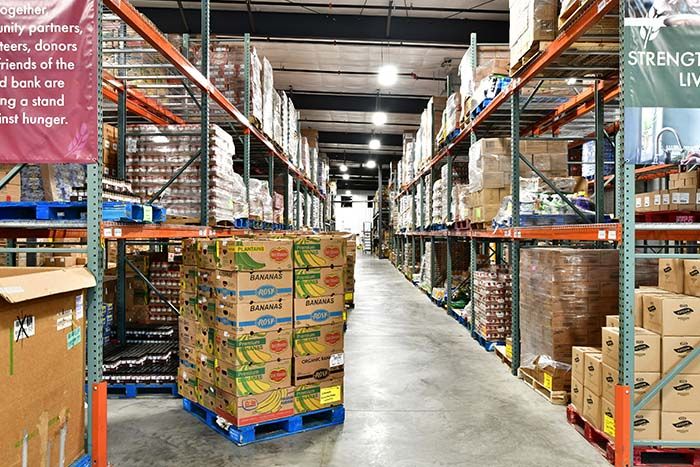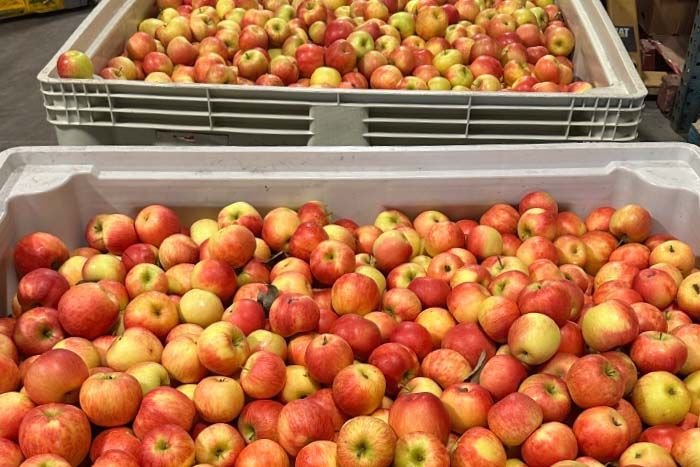
October 23, 2025
FMP Responds to FoodShare Delays
Feed My People Food Bank (FMP) is urging community awareness and preparedness following the Wisconsi...
Integrating more eco-friendly practices at the food bank reduces waste and nourishes communities.
One of the most common comments at the food bank from those who have never toured it before is, "I had no idea you were so big and did so much." When you enter our distribution center, you are greeted by aisles and aisles of food packed on pallets, interspersed by four giant coolers and freezer areas. The floor space could easily hold the equivalent of 126 city buses. Volunteers are loading pallet jacks with food to be trucked out later in the week, while others are busy sorting fresh pallets of apples into family-friendly boxes. Forklifts reach up high, pallet wrappers spin orders, and trucks enter and leave the shipping and receiving docks at opposite ends of the building. In any given week, a lot of waste can be generated if steps aren't taken to mitigate it. We have a great responsibility to help ensure as much food as possible gets to where it needs to go by reducing waste from the products received and the packaging it comes in.
Food rescue is one of the leading practices we encourage among all our hunger-relief partners. Together, we work with grocery stores, gas stations, and other retailers to take in food that no longer has floor space at their original destination for various reasons. It's especially vital for our partners in rural communities to pick up directly from their local retailers. It means instead of good food going to the landfill, it's redirected to families that can use it, which is a big win when 38% of food in the USA goes unsold or uneaten, according to Feeding America.
FMP launched Farm to Food Bank last summer to intentionally generate partnerships with local food harvesters and suppliers. So far, 24 have officially committed their product to us, which will help reduce carbon emissions from transportation, improve the quality of fresh food, and strengthen local economic ties with vendors who support our mission.
We are also continually working to improve sustainability practices within the distribution center, such as installing automatic lights that shut off after inactivity, re-using "banana" boxes to support food packing projects, and improving recycling efforts. We will soon have a baler that will allow us to process polyethylene plastics for recycling offsite, and we hope to convert our cardboard materials to this method as well.
Sometimes, however, no intervention can prevent food from going bad - whether we received it in poor condition or so close to its expiration that we could not distribute it in time. This "no chance food" still gets used by places such as pig farmers, who can integrate it into their farming needs.
The bottom line is that we are dedicated to minimizing food waste and ensuring that good food reaches those in need. Together, we can significantly alleviate the impact of food insecurity and build a more resilient food system for our communities.
This article was originally published in Feed My People's Spring 2024 newsletter. Read the full newsletter.

